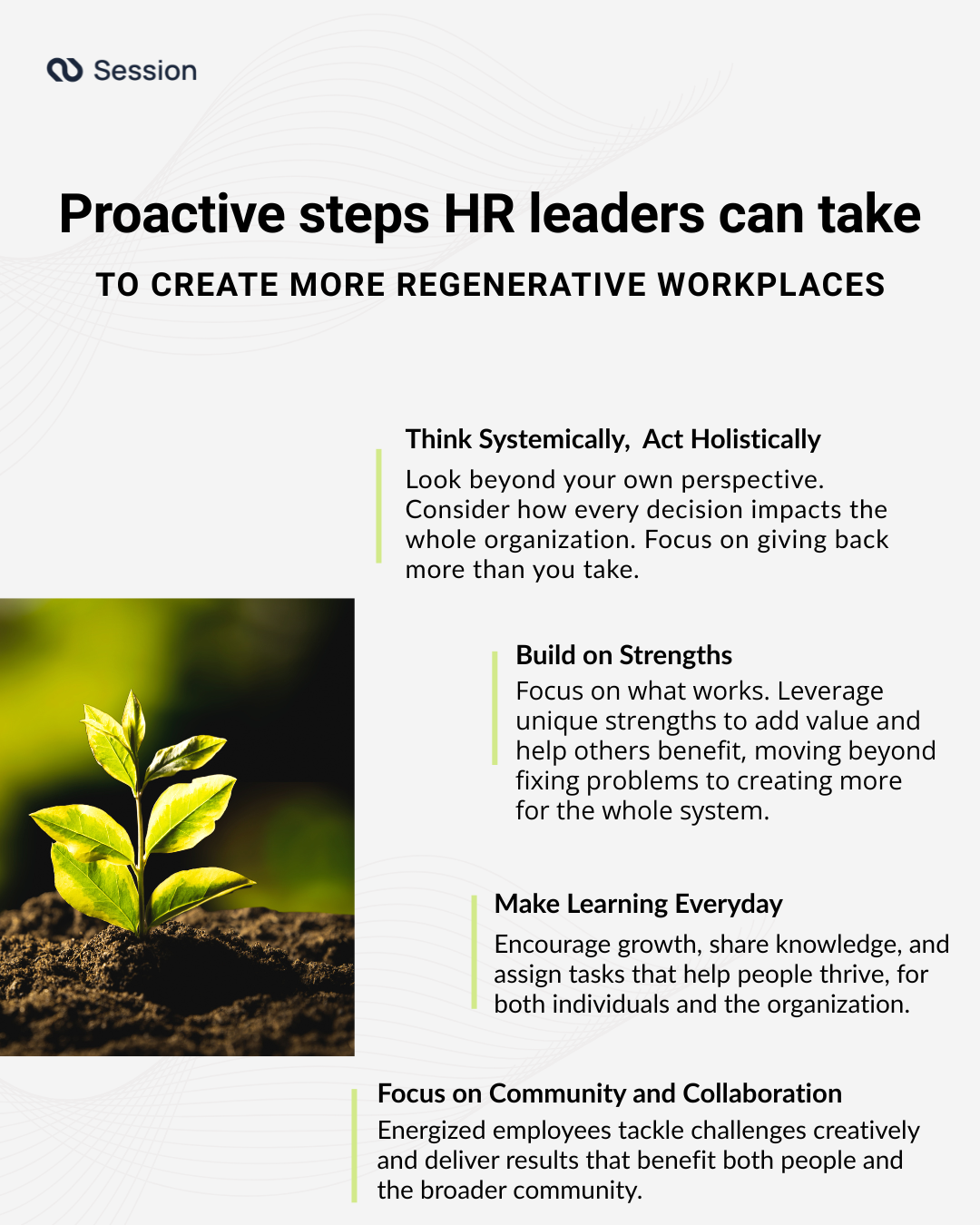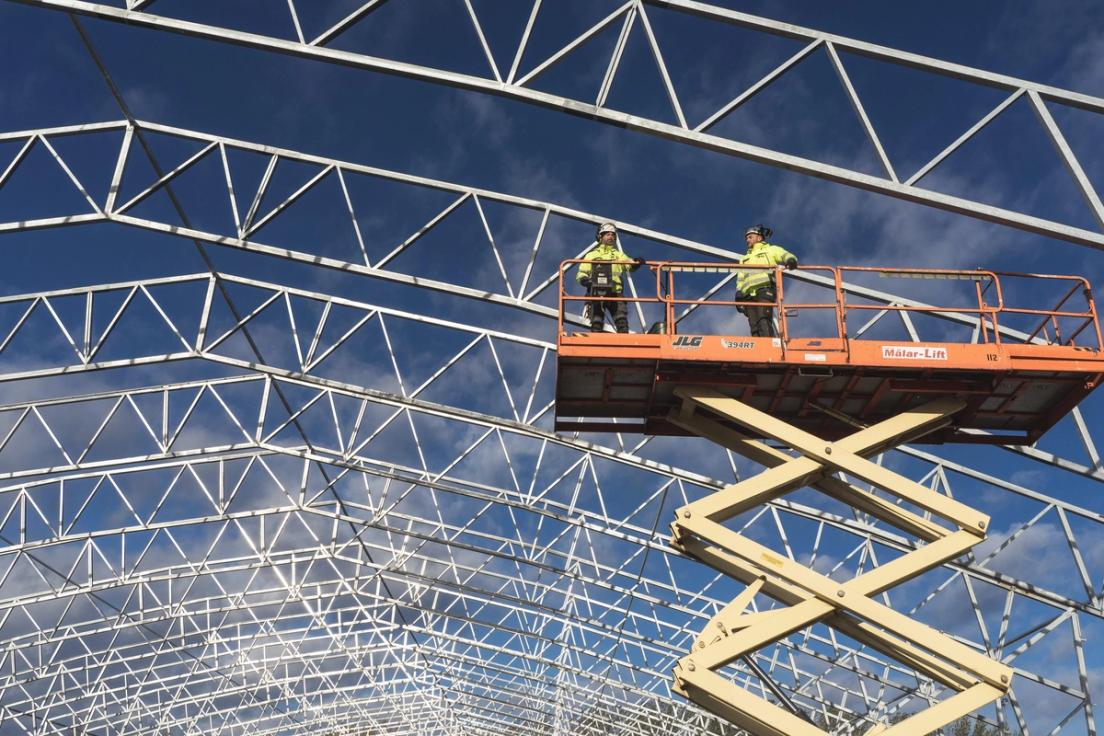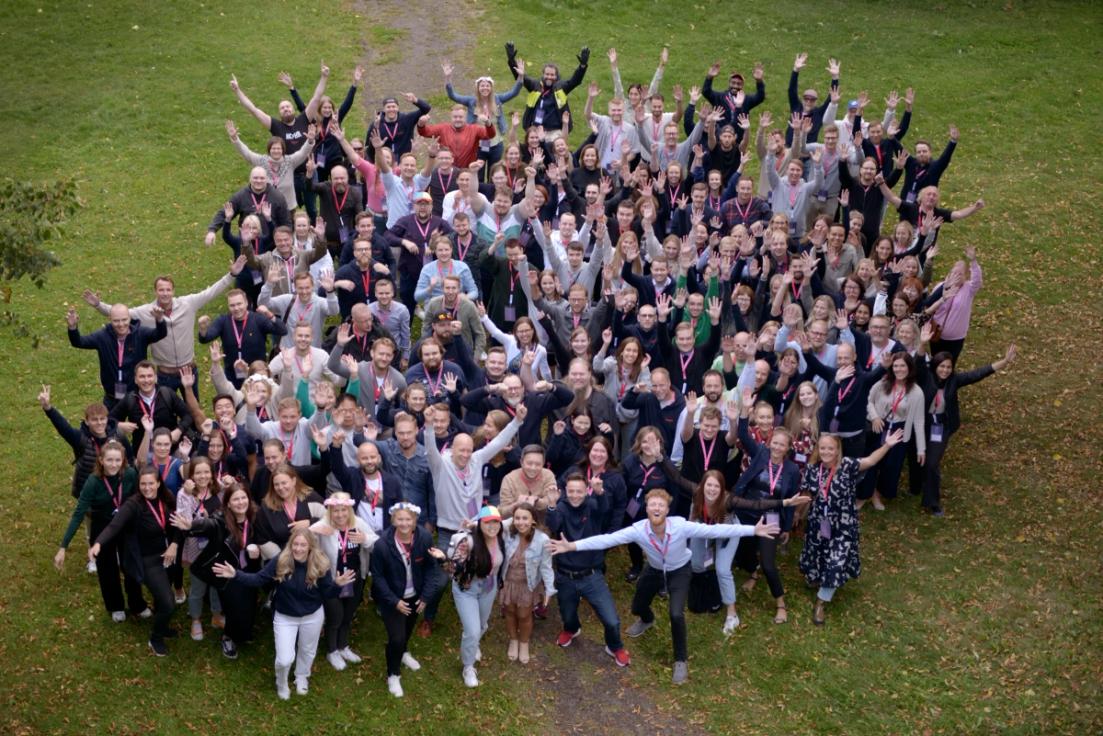Younger generations are reshaping how we view work. They’re clear about wanting more flexibility, choosing how and where they work, with the freedom to work from home or anywhere that suits them. At the same time, many are questioning traditional hierarchies, favouring more self-managed ways of working, and, in some cases, even workplaces without formal managers altogether.
But it’s not just about generations. People in general want their work to feel meaningful, despite their age. They want to be connected to a greater purpose and make a positive impact in the world. And above all, people simply want to go to work - and truly thrive.
Work isn’t just about completing tasks, it’s about being part of a community, contributing to something meaningful, and creating value that extends beyond oneself.
In that sense, work should be about far more than simply maintaining a sustainable balance, where everything adds up and we neither overextend nor underuse our human potential. That way of thinking stems from the idea of maintenance. But in recent years, younger generations - and increasingly many from older ones too, have started asking for something greater.
This is where the idea of regeneration comes in - let’s take a closer look.
Regeneration
Rather than focusing on quick fixes or isolated parts, the regenerative mindset invites us to take a step back and view the system as a whole - including the workplace itself, and its place within something larger. It’s an approach to leadership and organizational development centered on giving more than we take. Regeneration is about creating new energy and opportunities, not just repairing what’s broken or optimizing what already exists. It’s about fostering innovation and fresh thinking, rather than merely maintaining what exists. Most importantly, it’s about building the conditions in which both people and organizations can continuously grow, adapt, and renew themselves - in ways that go beyond what we expect or currently have.
The idea of regeneration comes from the climate crisis; the recognition that we are gradually eroding the very foundations of life: biodiversity, clean air, safe drinking water, and access to resources for the future. Right now, we consume more than we give back, pollute more than we clean, and take more than we contribute. In economic terms, it’s like living on credit, and the bill is coming due. That’s why the concept of regeneration is now gaining traction in Danish and international workplaces, in agriculture, in production methods, and in how we organize ourselves. We can no longer simply take and discard - we need to completely rethink the way we exist and operate.
Regeneration doesn’t necessarily mean overhauling an entire organization and starting from scratch. Many HR functions may already be working well, but the regenerative mindset gives us the opportunity to adapt and strengthen existing models and practices, making them even more restorative and nourishing than they are today. In some cases, it may even mean setting aside what exists and starting fresh with something far more meaningful and rewarding than what came before. Sometimes, starting over is actually easier than rethinking…
Let’s take a closer look at what HR can do to create more regenerative workplaces.

Proactive Steps HR Leaders Can Take to Create More Regenerative Workplaces
1. Think in terms of the bigger picture and the system as a whole
Holistic leadership and collaboration are about seeing the bigger picture; making the effort to understand how every decision affects the organization as a whole. No one operates in isolation, neither individual employees nor the company itself. In regenerative organizations, the focus is on thinking systemically - not only in producing goods or services, but also in how we collaborate and make decisions. Are we truly including everyone? Have we listened to, involved, and considered all stakeholders and those impacted by the choices we make?
In other words, it’s about looking beyond your own immediate perspective when setting a strategy, making a decision, or producing a product. Are we creating more value than before? And, just as importantly - are we giving back more than we take? If so, we’re on the right path toward true regeneration!
2. Build on Strengths
When an organization, team, or individual seeks to grow, regenerative organizations focus on strengths. What are we already doing well as a company, a team, or as individuals? Where do we have unique contributions to offer? What can we provide that the world truly needs, and how do we ensure it gets more attention in our daily work?
In traditional organizations, development is often approached from a problem-focused perspective. What’s missing? What needs fixing? Where are we falling short? From there, the focus becomes patching the gaps to restore balance. As discussed earlier in this article, this is at best a sustainability mindset underlying this development philosophy. Regenerative organizations take it a step further. Here, the goal isn’t just to achieve balance - it’s to offer and add more to the system. Whether at the individual level or organizational level, the approach is the same: What strengths do I/we have, and what can we contribute? And how do we ensure that as many people as possible can benefit from it?
HR’s role here is to ensure that leaders and employees are equipped to think and act from a strengths-based perspective rather than a problem-focused one. Inspiration can be found particularly in the philosophy behind Appreciative Inquiry and Strengths-Based Leadership.
3. Introduce continuous learning and renewal
In regenerative workplaces, continuous learning is a top priority. This means employees are encouraged to consistently try new things, develop new skills, and challenge themselves with new tasks, and potentially even explore new areas of work. This can include mentorship programs, where employees learn from experienced colleagues willing to share their wisdom. It can involve skills-boosting courses and workshops. And it can mean that colleagues collectively discuss how to create an even better daily learning environment, introducing new practices that assign tasks not just to the most competent person, but perhaps to the one who will truly grow or benefit from taking on a particular task.
In this way, learning becomes part of everyday work. Not something confined to a single course, nor something with a fixed endpoint. Instead, it becomes a natural part of work life, helping not just the individual, but the entire organization to grow and thrive.
4. Focus on Community and Collaboration
In regenerative organizations, there is a strong emphasis on community and collaboration. When leaders and teams take responsibility for the overall well-being of the team - physically, mentally, and emotionally - not only does performance improve; employees also experience greater energy and a stronger ability to solve problems creatively in their day-to-day work.
When employees are engaged in their work, they bring greater energy, enthusiasm, and drive to what they do. In regenerative workplaces, this translates not only into high motivation but also into a strong commitment to delivering results that benefit others. This “spirit” fosters a sense of connection, something increasingly needed in a time when loneliness is on the rise (especially amongst young people), and when many are seeking workplaces that create real value - both for themselves and for society.
Conclusion
Modern work life is about far more than tasks and money. Contemporary, regenerative organizations uplift their employees, provide space for growth, and foster a sense of purpose and connection at work. They create results that benefit the wider community, give more than they take, and make a positive contribution to the overall balance, for employees, society, and the planet as a whole. When we design work with a focus on humanity, purpose, and relationships that go beyond the ordinary, everyone wins.
Ready to embrace the regenerative approach? Reach out at getsession.com to learn more!













